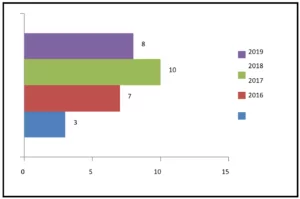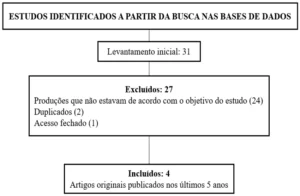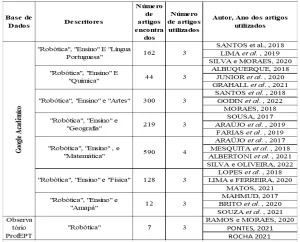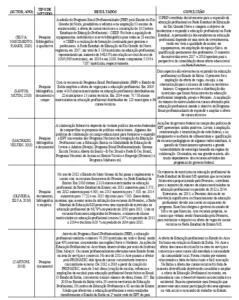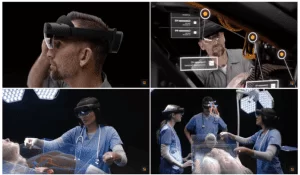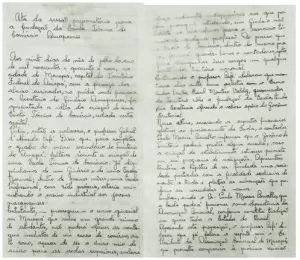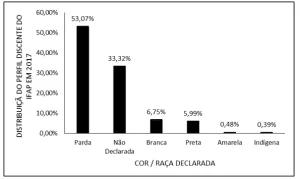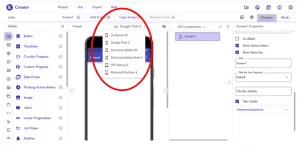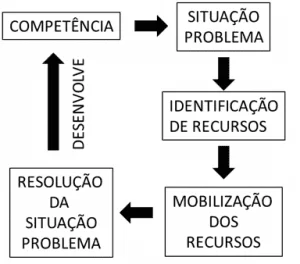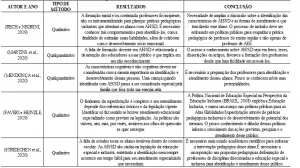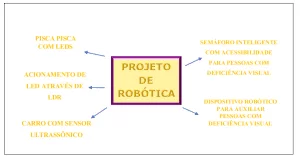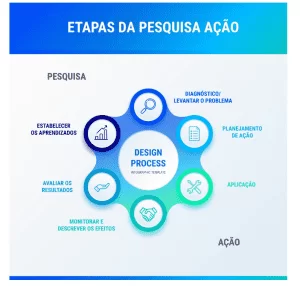MARINS, Danielle Stéfane de [1]
COSTA, Celia Regina Bernardes [2]
MARINS, Danielle Stéfane de; COSTA, Celia Regina Bernardes – School Recreation: the game and the game in Childhood Education – Multidisciplinary Core Scientific knowledge magazine, 1 Year. Vol. 10 pp. 05-24. ISSN. 2448-0959
SUMMARY
Recreation is the playful activities, practices that involve spontaneity, freedom of expression, creativity, joy, the pleasure of individual or collective form. Recreational activities involving games, toys and games can be developed in schools, clubs, companies, camps, among other spaces. In the school context in addition to the aspects mentioned, recreational activities aimed at the full development of students in cognitive, affective, social and engines. Thus, this research is as a work that seeks to understand the importance of the recreational activities involving the toy, the game and the game, as bodily practices of school physical education, able to contribute to the integral development of children. The methodology used in this study was through research in scientific articles, books, and Internet sites. After the studies, it was possible to notice that the recreational activities involving the toy, the game and the game, are characterized as recreational organizations important to the development of children. In addition to the relaxation of rules, of space, of time, of movement, extending the basic skills, recreational activities also encourage broad participation and coexistence among players, promoting the general development of the human being, in physical, cognitive, affective and social. Therefore, ludic and recreational practices must be part of the school curriculum and integrate the school's pedagogical proposal.
Keywords: education. School. Childhood. Recreation.
INTRODUCTION
Modern educational guidelines assert that the practice of physical activities should be inserted, effectively, in the educational system. Physical education should not be perceived only as a simple statement to the movement of the body, so essentially physical. The role of this discipline must be added to the development of the individual, in their quest for learning and for the achievement of knowledge, since the early years.
Recreation, in its early days, was not related to teaching, but the festivities and celebrations of worship the gods. "The games symbolize the overcoming of the barriers for which these groups (the primitive tribes) clashed, passing from generation to generation to children in the form of games. "(WAR, 1988 apud GARCIA; GIROTO, 2008).
In the school environment, the game always enjoyed a prominent place, being the most content worked for physical education teachers. However, your actual contribution to the integral development of the student's motive of questioning, to school, the parents and some teachers. […]. It is believed that the school be a social institution, the school environment is a kind of influence, produces or reproduces, the processes of construction of the subject. And so the game is an important way in the educational process of the individual, with the potential to bring activities and people's behavior, with regard to basic conditions to freedom, the separation within the limits of time and space and the regulation. (VALDUGA, 2011).
During the proposed physical activities at school the game manifests itself in children naturally. For the relief of inner tension, with kids acting spontaneously and relaxed. Students exercise without fear and in accordance with rules of conduct. In this way, the game promotes the physical, mental and emotional development of children. (MARQUES; KRUG, 2009).
After several years, the rise of the Industrial Revolution brought the labor rights and leisure was inserted into the daily life of workers. The primary activity is in the personal and social development of the individual. Numerous benefits have already been established, as an extension of the spatial and temporal notion, motor development, cognitive, emotional and physical. Through the games the child the adolescent overcome barriers, getting the notion of success and failure, always analyzing how best to act in various situations of everyday life.
Recreation has as main objectives: to integrate the individual to the social environment; develop mutual knowledge and group participation; facilitate the grouping by age or affinities; developing occupation for the idle time; acquire habits of interpersonal relations; disinhibit and unlock; develop verbal communication and non-verbal; Discover playful skills; develop emotional adaptation; Discover value systems; give evasion of the excess energy and increase the individual's mental capacity. (VIEIRA, 2016).
The early childhood education requires new approaches to become truly effective, forming citizens and changing lives. The game, the game and the toy are very important in the early years, since the child carries to those instruments that lives on a daily basis. The playful moment is an "imitation" of reality already experienced by adults. "Through play the child can express her feelings in relation to the social world and transform your reality that is often tortuous due to the problems that brings. "(AHMED; MC, 2007).
The Physical education teacher is the mediator during recreational activities. He must follow in providing participation during exercises; as well as insert in school exercises systematic proposing, seeking the interdisciplinarity.
The main role of the game in the school environment is to give other possibilities of understanding the sport and provide students with the development. When it comes to physical education in particular, in synthesis, the overall development of the child is to allow his own corporality shows working on their intentionality Motricity, without any distinction, because life is made up of movement that has a range of personal, social, cultural and political. (VALDUGA, 2011).
Thus, it is proposed to research a thorough study about the game, the game and toy, addressing each in its historical and social context, as well as the benefits they bring to the early childhood education. The study guides for the problematic: how recreational activities involving toy, joke and play, can contribute to the education of childhood?
As a general objective, the research seeks to understand the importance of the recreational activities involving the toy, the game and the game in childhood education. And specifically: understanding the interference of recreation in the various historical and social contexts; identify the importance of recreational activities in the process of learning and socialization of children in early childhood education; point out the relevance of the toy, the game and the game to the development of the child; point the role of Physical education teacher in the art of teaching through recreational activities.
Recreational activities provide pleasurable moments and spontaneous during physical education classes. Through these activities is possible to develop collectivist aspects, besides increasing and link learning with practical activities.
The study of the toy, the game and the game is relevant for various aspects. The understanding of these educational instruments, both their differences as the practical use of each, are propelling formula that helps the teacher of physical education, and other educational agents.
Cognitive and psychomotor training (especially in childhood) can be done a better way through the games, toys and games. Recreation is already inherent in the child, in a natural way. The inclusion of recreational activities during the school period generates a larger development, both individual and collective. The perception of society and the transformation of the subjective aspects of each individual are perceived in the course of the practice of the activity.
Recreational exercises, materialized through the toy, the game and the game, influencing both students as professional of physical education. The teacher changes your daily life with new proposals, diversifying your lessons and growing as an educator.
METHODOLOGY
The study has as methodology the literature review. Used articles published between 2007 and 2016, in the scientific data online (Google Scholar). For the selection of the sources were highlighted materials that cover school recreation in early childhood education. The following keywords have been applied: recreation, toy, game, game, physical education for children.
The data were collected between February and October 2016.
To reach the expected results through research, will be analyzed and discussed in the articles found on the children's Club.
1. RECREATION IN THE VARIOUS HISTORICAL AND SOCIAL CONTEXTS
The games and the games are activities which are essential to a good physical, mental and emotional health, being always present in any culture, since the earliest times. Through these activities, the child develops the language, thought, the autonomy, the interpersonal relationship and raises your self-esteem. (Mauritius, 2008)
The molds of education are old, have been modified over time, but always seek a common purpose: to achieve social objectives. The playful methods have always been valued by diverse peoples, with emphasis on Brazil, where the Indians were taught the children of the village to hunt, fish and live in society, all through fun activities, so that when the children become adults, were able to survive in reality that would face. (SANT ANNA ´, 2011) in the design of Cintra, Proença and Jesuíno (2010) the primitive society taught through imitation, being the Act of playing an insert in social roles, where he taught his own survival.
With the new social restructuring coming with the emergence of cities, appeared the first schools. Thinkers such as Plato already considering the importance of the games during early childhood. The later sports had influence beyond the body construction, in shaping the character and the personality of the child. In this context arose the toys, as it is known in the present day. (CINTRA; PROENÇA; JESUINO, 2010)
In the middle ages learning through games followed the Greek model. (CINTRA; PROENÇA; JESUINO, 2010). "The game seen as recreation since Greco-Roman antiquity appears as relaxation necessary to activities that require physical exertion, intellectual and scholar. "(KISHIMOTO, 2011). According to Kishimoto (2011), the game during the Middle Ages was not seen as "serious", because it was related to gambling, widespread at the time.
From the Renaissance, sought to break away from the Medieval thought, bringing the focus of the discussions of the humanism period. So, the games lost body focus, being highlighted the mental activities. "From that Renaissance movement in the 16th century, began to realize the value that the games were for education, seen as a trend that is natural to man. "(CHAUHAN; PROENÇA; JESUINO, 2010).
The game served to publicize the principles of morals, ethics and content of history, geography and others, from the Renaissance, the period of "playful compulsion". The Renaissance sees the joke as conduct that promotes the development of intelligence and makes it easy to study. To meet the children's needs, the children's game becomes appropriately for the learning of school content. So, to counter the verbalistas processes of education, the pedagogue should form playful to the contents. (KISHIMOTO, 2011).
In the context of brazilian history, the games are known today are the result of miscegenation between Indians, Portuguese and blacks. This features a huge content factor that came as the heritage which should be preserved, valued and used in school contexts. (SANT ANNA ´, 2011)
The Indians always made real customs to teach their children to hunt, fish, play, dance; a playful way of learning and representing culture, education and the tradition of their people. […]. The blacks brought their customs, similar to those of the Indians, being required since child, building your own toys, namely fishing, swimming, hunting. Culture, education and tradition developed creatively, and playful at the same time meet their real needs. The sons of the Portuguese when they came to Brazil had no contacts with the playfulness as acts for survival, had as Act of leisure activities and intellectual enrichment. Their customs, brought from Portugal, were totally different from those existing in Brazil of the Indians and brought by blacks in their luggage, in slave ships from Africa to here. (SANT ANNA ´, 2011)
In this period also the folklore, which was over time being aggregate of new formats, visions nuances and style. The cultural mixture brought tales, stories, legends, superstitions, games and values for the Brazilian social scenario. The Portuguese culture that brought in their tales and legends very popular figures like the werewolf, the headless Mule and the bogeyman, in addition to the stories of witches and fairies, enchanted treasures, among others. (PERANZONI; ANDRADE; ZANETTI, 2012).
The game has always been part of her life, in times past there was not much importance and was seen as a hobby, but nowadays the game is increasingly valued[…]. The games are always in constant transformation, always passing from one generation to the next it is broadcast expressively, either verbal or gestural, always gaining new values to be evaluated as essential tool in any child's childhood. (PERANZONI; ANDRADE; ZANETTI, 2012).
With the observation of childish games through the ages, one can understand the childhood as the age of the imaginary, the playful, being the spontaneous conduct free game and inherent in children, whether in the primitive world or in the modern era. (KISHIMOTO, 2011)
2. IMPORTANCE OF RECREATION IN THE LEARNING PROCESS
All phases of human life require the playful context, which presents a wide range of values, depending on age. For children and adolescents, the purpose of the games and the games is aimed at teaching provide satisfaction to study and learn. (Mauritius, 2008)
Second, Schereiber (2010) the playful contributes to learning because the child faces their internal conflicts and develops emotional, cognitive aspects fully. The game gives the opportunity for the child to make mistakes and get it right, learn by yourself and build your own knowledge base. In the playful no mistake and Yes creation.
The playful, important tool in mediation of knowledge, stimulates the child while working with concrete material, games, namely, all she can handle, reflect and reorganize; learning happens with more ease and enthusiasm because she learns without realizing it, you learn playing. The play enriches the dynamics of social relationships in the classroom, strengthening the relationship between teaching and learning. (MODESTO RUBIO, 2014)
It is through play that children construct their identity. Several imaginary children's situations are present in everyday reality, so the child learns to respect rules and understand the limits and the roles of each in real life. (MODESTO RUBIO, 2014)
Children are capable of dealing with complex psychological difficulties through the play. They seek to integrate experiences of pain, fear and l[…]oss children living in dangerous environments repeat their experiences of danger in your games. For example: in Brazil, children living in the slums where the fight between police and bandits have as their favorite theme games these conflicts. When the child takes on the role of someone who fears, the personification is determined by anxiety or frustration. […] The passage of a passive role to an active role is the basic mechanism of many recreational activities. Reduces the traumatic effect of a recent experience and makes the individual more well prepared to be submitted again to the passive role when necessary. That explains, in large part, the beneficial effect of the joke. (KISHIMOTO, 2011)
For multiple authors, recreation means satisfaction and joy in what you do. It depicts an activity that is free and in which the interest keeps by itself, so these activities should generate pleasure, and be so attractive that children or feel like stop playing. Recreation aims to relax, spending energy, learn, educate, serve to communicate something, serves to improve relations, anyway the recreational activities incite and promotes learning so playful and enjoyable.
The joke is a form of fun typical of childhood, a natural activity, that does not imply commitment, planning and seriousness, is a practice that generates spontaneity and pleasure. So playing the child having fun, doing exercises, builds knowledge and learn to live with friends. Through this practice the child develops the language, thought, socialization, self-esteem and initiative, preparing to be a citizen capable of facing challenges and work together to build a better world.
According to Campos (2006) in the teaching and learning process, the play and the play helps in psychomotor development, in the development of fine motor skills and broad, as well as in the development of thinking skills, such as imagination, interpretation, decision making, creativity, raising chance, obtaining and organizing data and the application of facts and principles to new situations that happen when we played When we obey rules, when we experience conflict in competition.
The insertion and use of toys, games and jokes in pedagogical practice is a reality that the professor, the toys should not be exploited just as entertainment, but also as productive elements to promote learning. For the author, teachers need to be aware that the joke is needed and that brings enormous contributions to the development of the ability to learn and think.
According to Freire (1989) the skills developed in a context of game, toy, in the universe of children's culture, according to the knowledge that the child already has are important and should be incorporated in school practices, games like hopscotch, catcher, cantigas de roda, hide and seek game of circus, has played throughout history, important role in the development of children.
Through the games the children's knowledge evolves. Playful exercises are, in its origin, a natural impulse of the children, the games and the games the satisfaction of a need inside. In addition to the pleasure and spontaneous effort, the playful situations drive the mental development, as trigger and activate neurological functions. The Act on objects children structure their environment of space/time, being motivated to use the intelligence through the competitiveness required within the game, overcoming, as above, obstacles cognitive and emotional. In this way, the game is not just a pastime, but a method that is demanded naturally by the body itself and must be settled within the basic curriculum of school education. (Mauritius, 2008)
Although it is explicit on the bright side of playfulness within the educational system, many educators do not realize the importance of this method. To understand the universe of playfulness is the educator be involved so deeply in the process of teaching, including the games, games and toys, according to the children's perspective. (MODEST; RUBIO, 2014)
Discussions on the influence of the games and the games in education have been consolidating, too by the fact that students develop through playfulness, reasoning ability and solution of problem situations. In addition to the social development of the student who has difficulty relating to others, either by insecurity or shyness. Through the application of games comes the opportunity to exchange experiences and the consequent socialization of this child. (MODESTO RUBIO, 2014)
3. TOY, GAME AND PLAY IN CHILD DEVELOPMENT
In Brazil, the Federal Constitution of 1988 and the Statute of the child and adolescent (Law No. 8,069/90) shall ensure that the condition of citizens to that portion of the brazilian population, and their protection and education a duty of the family, society and the State.
Understand the child in this age group as subject and history is to recognize it as a part of the education process. Therefore, in this stage of early childhood education, the toy and the joke should be part of the pedagogical process and be considered as necessary and fundamental axes for a quality education.
"The play is the primary mode of expression for children and one of the most important activities for the child constitutes a subject of culture. "(CEBALOS, 2011). Vygotsky (1994) States that the game consists of three specialties, which are the imagination, imitation and the rule. These characteristics are present in all the childish games, be they traditional, make-believe or that standards predominate, as occurs in most sports like football, volleyball or burned. (SCHREIBER, 2010).
The games and the games are activities present in every moment of life, so very important. The playfulness sum in a positive way in the relationship between people, enabling innovation through creativity. The child, when inserted within the game, remains in a pleasant environment, their potential booster, assimilating many abilities, both inside and outside the school environment. (IAVORSKI, 2008)
Kishimoto (2003) States that it is a complex Act define what game, what's a joke and what's toy. The different cultures approach the terms differently, and may conduct a game or not play within the social context in which it is inserted. The author expounds that the toy is a holder for the joke, and also differs from the game. The toy assumes a particular relationship with the child, being indeterminate features for your use. (MODESTO, 2014)
Toy is all that is used for the Act of joking, being an object with which the child get involved emotionally, interacting real mode. The toy gives small fun, play, and it is important that the adequacy of these children's needs and capabilities, always according to your age group. The toy is a stimulus to development, because through it the child invents, explores, try your skills with specific stimuli to curiosity, autonomy and improvement of language, concentration and attention. (CEBALOS, 2011).
To the author the toy is understood as a "joke support object", that is, the toy is represented by objects as spinning tops, dolls, strollers, balls among others.
According to the author referred to above, the game, the game and the play have the same meaning, because all of these activities are synonymous of fun, hobby, distraction, while the toy is seen as the object that provides the play. For her the joke is an integral part of life and there is no age limit to take advantage of this moment. Play provides joy and fun, arouses curiosity, stimulates the intelligence, allowing the human being express, create and imagine.
Kishimoto (2001) points out that the toy teaches the person something to add to their knowledge, their global context. In early childhood education, the educational toy clinched their place, thus the playfulness assists the teacher in his work. (IAVORSKI, 2008) to the author the toy is understood as a "joke support object", that is, the toy is represented by objects as spinning tops, dolls, strollers, balls among others.
According to the author referred to above, the game, the game and the play have the same meaning, because all of these activities are synonymous of fun, hobby, distraction, while the toy is seen as the object that provides the play. For her the joke is an integral part of life and there is no age limit to take advantage of this moment. Play provides joy and fun, arouses curiosity, stimulates the intelligence, allowing the human being express, create and imagine. In this context, according to Sharma (2001):
The toy is a development opportunity. Playing, the child experiences, discover, invent, learn and skills. Besides stimulating curiosity, self-confidence and autonomy, provides the development of language, thought and concentration and attention. (SCHREIBER, 2010)
For Paulo Freire (2002), "the games have great significance in the period of childhood, where safely and well structured can be present in physical education classes in the classroom. "(IAVORSKI, 2008). Kishimoto (2003) conceptualizes joke as "the action that the child plays to fulfill the rules of a game, to plunge into the playful action and can tell it's the playful action. "(MODEST, 2014).
The joke is a form of fun typical of childhood, that is, a natural activity. So it is of fundamental importance for child development to the extent that the child can transform and produce new meanings. The play is thus the fulfilment of trends that cannot be immediately satisfied. Imaginary situations constitute part of the emotional atmosphere of the toy itself. […] The game motivates, captivates and involves therefore is significant. (CEBALOS, 2011)
Kishimoto (2010) argues that the game may or may not have rules, giving opportunity to sharpen the creativity, because their rules are more "open," which induces a participation free and relaxed. The child thus will sink in the playful action. The toy and joke are intertwined, not being confused with game. (CEBALOS, 2011)
According to Friedmann (2004), the games are non-verbal languages, in which the child expresses and passes messages, showing how she plays and see the world. However, it must be remembered that the proposed use of jokes and games in school need to be appropriate to the age and the students ' series.
The National Curriculum of early childhood education (RCNEI, 1998) stresses the importance of the games involving the singing and movement, since they allow the development of body schema and the expressive capabilities of the child.
Jokes involving singing and movement, at the same time, enable rhythm perception, identification of segments of the body and physical contact. Children's popular culture is a rich source in which you can get songs and jokes of affective nature in which the body contact is your main content, as in the following example: "I know an alligator that likes to eat. Hide your leg, or the alligator eats your leg and your big toe ". These games, in that it offers the body contact of the child with the adult, help develop their motor skills and expressive (BRAZIL, 1998).
The game, according to Grassi (2008), is a psychomotor activity that encompasses physical, mental and emotional actions, which aims at an objective and consists of rules previously stipulated. The game can be both a leisure activity like owning a pedagogical aim/professional. (MODESTO, 2014).
According to Kishimoto (2006), when you pronounce the word game each can understand it differently. Can be political games, adults, kids, game of hopscotch, chess game, riddles, football game, dominoes, jigsaw puzzle, among others. For her, it's hard to draw up a definition of game that encompasses the multiplicity and complexity of its manifestations.
To Friedmann (1996) the game can not only be seen as competition and not considered only imagination, especially for those people who deal with children in early childhood education. The game is a physical or mental activity organized by a system of rules. Are ways to contribute to the intellectual and social development of the child, enabling greater access to culture, values and knowledge created by humanity. For the author, the game is an integral part of the process of Constitution of the human being, through the games men and women developed their reasoning skills, troubleshooting, tools development, socialization, of affection and of using the body as an instrument of construction and environment change. The game helps in the construction of knowledge, that is, it is a fact that innate meets the need of human activity, which in turn provides the learning. The desire to play stimulates the child to discover, manipulate, observe and interpret the world around it, because it is an activity that gives pleasure and satisfaction.
Second Grandson (2001), the game features the playful features, however the rules are specific, being characterized as closed. The child is induced to parameters of respect, attention and reasoning. The game should be motivating, have intentions and meanings, sticking to goals and forms. (CEBALOS, 2011)
The game at school presents benefit to every child, a full development of body and mind. Therefore, in playful activity, what matters is only the product of the activity which results, but the action itself, fantasy moments are turned into reality, moments of perception, knowledge, moments of life. This game also allows the emergence of affectivity, whose territory is the feelings, passions, emotions, where transit fears, sorrows, joys and interests. An educational relationship which presupposes knowledge of own feelings and others that require deeper consideration educator and an interest in wanting to know more and live with the student; the affective involvement, as well as the cognitive process of creativity involving the subject-be it child. (IAVORSK, 2008)
To sum up, in the words of Miranda (2001):
The playful is a general category of all activities that have features of game, toy and games. The game assumes a rule, the toy is the object manipulated and the joke is the Act with the toy and game. So, game, toy and the game have distinct concepts; However, interwoven, while the playful the covers. (SCHREIBER, 2010)
The playfulness is essential for the human being, no matter their age. The look on the playfulness must migrate only leisure for the design of effective learning. The progression provided by playful affects both individual and social/cultural aspects, developing the individual so full and integral. (IAVORSKI, 2008)
4. ROLE OF THE SCHOOL, THE GYM TEACHER AND THE FAMILY IN THE ART OF TEACHING THROUGH RECREATIONAL ACTIVITIES
Consumption, the isolation and the lack of spaces, among other factors, have shown that the play has been suffering transformations and in some places even disappearing. Modern society undergoes a series of transformations; cultural diversity gives space to the process of globalization, the collaboration has been replaced by competition and by the individualism, the public space destined to leisure comes disappearing, there is an increasing incentive to consumption, the group activities have been replaced, often by isolation and the traditional jokes cease to be practiced due to the expansion of new technologies.
With these changes, the role of the school, the family and teachers ended up being modified to meet the expectations of these groups.
The family, being one of the main references in the role of educating, has been suffering the consequences of this globalization, losing important values, including moments involving the play due to lack of time and knowledge of the parents about the benefits that the joke brings to child development.
According to Kishimoto (2006) through play, children develop skills important and fundamental for the development of autonomy and identity, in addition to mature some capabilities, such as memorization, imagination, attention and socialization. So, the family has an important role in the play, encouraging the practice of recreational and leisure activities that provide the movement with the children in the moments of the games; ultimately favoring elements that serve as incentive for this practice.
The teacher as primarily responsible for the organisation of learning situations should create possibilities of imbalance, showing the student, the new and the unknown, because before the challenge, the child tends to assimilate knowledge, using engines and mental resources. Cause imbalances is not letting the child adrift, she should be able to establish a link between the known and the unknown, increasing their autonomy and their independence. It's up to him to offer a space to merge play on daily lessons, enabling an environment conducive to learning and that contains joy, pleasure, movement and solidarity in the Act of play. It is important that children feel challenged and stimulated every time learn more.
The material used in the classes directly interferes in quality and learning. The more diverse is the material, Rico and more interesting happens to be learning. The material does not need to be done and finished. It can be created, built in their own school and with the help of the students; This will cause the material to become more meaningful to them. There may be painting with varied colors, stimulating works for the development of logical thinking.
There are many materials that can be used in recreational practices as: tires, balls, sticks, plastic rings, ropes, newspapers, cardboard boxes, plastic bottles, half balls, sand bags, benches, stairs, among others.
Each of them presents its specificities and provides the development of a skill. The tire develops motor skills; the ball develops specific skills such as: roll, kick, hit, hitting, etc.; wood bats help balance, coordination and agility spatio-temporal; the cardboard boxes can assist in building games, symbolic or toys in the improvement of motor skills; the wooden ladder is important for balance and spatio-temporal coordination. According to Freire (1989) "what's missing in schools, for the most part, is not material, is creativity. Or rather, lack the most important material. This creativity is never taught in vocational schools "
Therefore, in accordance with the RCNEI (1998, p. 29), the educator does not have to teach a child to play, because this is an act that happens spontaneously, but plan and organize situations for which the games occur in diverse ways, allowing children to choose the topics, papers, objects and companions to play with. The teacher should also make use of new methodologies, seeking to include in their practice the games, because the goal is to train active learners, reflective, hands-on, critical, dynamic and capable of facing challenges.
The school must create spaces and environments that promote the play, allowing continued training of professionals who work directly with children, including the professional of physical education. It's up to she also provide toys and elements that enrich the moments of playfulness within the school space, enabling a rich contextualized learning.
FINAL CONSIDERATIONS
After the studies, it was possible to notice that the toy, the game and the game are characterized as recreational organizations important to the development of children, in addition to the relaxation of rules, of space, of time, of movement increasing the basic skills and recreational activities. Promote broad participation also and coexistence among children, promoting the overall development of human beings, developing physical, cognitive, affective and social, essential elements for the development and learning of small. Through the toy, the game and the game the children share joys, sorrows, enthusiasm, passivity and aggressiveness. Therefore, the ludic and recreational practices must be part of the school pedagogical proposal. After all, educate is to prepare for life!
REFERENCES
ARRUDA, Almir Rajkumar; MOURA, Terezinha Andrade. Profile of school Recreation and their importance as educational activity for students in 3rd and 4th grades of elementary school. 2007. Monograph. (Bachelor's Degree and a Bachelor of physical education)-Department of physical education health Core, Federal University of Rondônia, Porto Velho, 2007. 76 p. available at: <http: www.def.unir.br/downloads/1218_perfil_da_recreacao_escolar_e_sua_importancia_como_acao.pdf="">.</http:> Access in: 29 mar. 2016.
Brazil. Ministry of education and sport. Fundamental education Secretariat. Benchmark National Curriculum for early childhood education. Brasilia: MEC/SEF v. 3, 1998. Available in: <http: portal.mec.gov.br/seb/arquivos/pdf/volume3.pdf="">.</http:> Access in: 2 Oct. 2016.
Campos, Maria Celia Rabello Malta. The importance of the game in the learning process. Available in: <http: www.psicopedagogia.com.br/entrevista/entrevista.asp?entrid="39">.</http:> Access in: 2 Oct. 2016.
CEBALOS et al. Leisure activity as a means of child development. Efdeportes.com, Buenos Aires, 2011. Available in: <http: www.efdeportes.com/efd162/atividade-ludica-como-meio-de-desenvolvimento.htm="">.</http:> Accessed on 27 Aug. 2016.
CINTRA, Rosana Carla Gonçalves; PROENÇA, Michelle Alves Muller; JESUINO, Kenrick's Dean. The historidade of the playful on Vygotsky's cultural-historical approach. Draft Cultural Magazine, Cushion/MS. v. 1, no. 2. Jul/dez. 2010. Available in: <file: :/users//dialnet-ahistoridadedoludiconaabordagemhistoricoculturalde-3694625.pdf="">.</file:> 8 set access. 2016.
FREIRE, João Batista. Education of whole body. São Paulo: Scipione .1997.
FRIEDMAN, Adriana. The art of play. São Paulo: Scritta, 1995.
KISHIMOTO, M. Tizuko. Game, toy, game and education. São Paulo: Cortez, 2011
GARCIA, Telma Lucia Aglio; GIROTO, Ana Paula. Recreation: means of socialization. 2008. Undergraduate research project-Faculdades Integradas "Antonio Eufrasio de Toledo, Presidente Prudente, 2008. Available in: <http: intertemas.unitoledo.br/revista/index.php/etic/article/view/1845/1751="">.</http:> Access in: 27 mar. 2016.
IAVORSKI, Joyce; VENDITTI, Rubens JUNIOR. The playfulness in the development and learning of the child in school: reflections on physical education, play and multiple intelligences. Efdeportes.com, Buenos Aires, Apr. 2008. Available in: <http: www.efdeportes.com/efd119/a-ludicidade-no-desenvolvimento-e-aprendizado-da-crianca-na-escola.htm="">.</http:> Access in: 28 Aug. 2016.
KISHIMOTO, m. Tizuko Game, toy, game and education. 14. Ed. São Paulo: Cortez, 2011.
MARQUES, Marta Birth; KRUG, Hugo Norberto. The game as content of school physical education. Share your Digital Magazine, Sept. 2009. Available in: <http: www.partes.com.br/educacao/ojogocomoconteudo.asp="">.</http:> Access in: 26 mar. 2016.
MAURITIUS, Juliana Tavares. Learn playing: the playful learning. Educational psychology, 2008. Available in: <http: www.psicopedagogia.com.br/new1_opiniao.asp?entrid="678#.V9GBq1srLIU">.</http:> Accessed on: 8 Sep. 2016.
MODEST, Monica Cristina; RUBIO, Juliana de Alcântara Silveira. The importance of Playfulness in the construction of knowledge. Electronic journal of knowledge education, 2014. Available in: <http: docplayer.com.br/5142075-a-importancia-da-ludicidade-na-construcao-do-conhecimento.html="">.</http:> Access in: 28 Aug. 2016.
PERANZONI, Olasunkanmi Cauduro; ANDRADE, Lincoln Nogueira; ZANETTI, Adriane. Playfulness: a rescue in the history of the play. Efdeportes.com, n. 167, Apr. 2012. Available in: <http: www.efdeportes.com/efd167/ludicidade-um-resgate-na-historia-do-brincar.htm="">.</http:> Accessed on: 8 Sep. 2016.
SANT ´ ANNA, Alexander. The playful history in education. REVEMAT, v. 6, n. 2, p. 19-36, Florianópolis, 2011. Available in: <https: periodicos.ufsc.br/index.php/revemat/issue/view/1853="">.</https:> Access in: 7 set. 2016.
SCHREIBER, Zélia Tresoldi Meregalli. Playfulness: a tool for children's cognitive development. A light, Rio Grande do Sul, 2010. Available in: <http: www.lume.ufrgs.br/bitstream/handle/10183/39641/000825046.pdf?sequence="1">.</http:> Access in: 28 Aug. 2016.
SANCHEZ, Fledson. The role of professor of early childhood education in mediation in the playful universe of the play. Educational Psychology: thinking with you! 16 Oct. 2011. Available in: <http: psicopedagogo-comvc.blogspot.com.br/2011/10/o-papel-do-professor-da-educacao_16.html="">.</http:> Accessed: 26 Sept. 2016.
SILVA, Luciana de Araújo, M.; Lima, Nagesh Jaslene. Scientific methodology manual for the preparation of scholarly works. 2. ed. College Patos de Minas-FPM. Undergraduate courses and Specialization. Patos de Minas, 2015.
VALDUGA, Camila. Game in physical education: discussions and reflections. Efdeportes.com, Buenos Aires, Aug. 2011. Available in: <http: www.efdeportes.com/efd159/jogo-na-educacao-fisica-discussoes-e-reflexoes.htm="">.</http:> Access in: 27 mar. 2016.
VIEIRA, Alexander. The physical education and Recreation: a new job offer. Medical Web site – your health just keeps getting better! 2016. Available in: <http: www.sitemedico.com.br/site/boa-forma/fitness/7370-a-educacao-fisica-e-a-recreacao-uma-nova-proposta-de-trabalho="">.</http:> Access in: 29 mar. 2016.
[1]Student of the course of physical education of College Patos de Minas (FPM).
[2] Professor of the course of physical education of the Faculty of Patos de Minas. Master in Health promotion from the University of France

